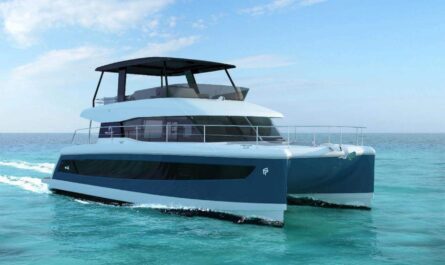Variable Frequency Drives in North America – Powering ahead with Innovation and Adoption
North America has emerged as one of the leading regions for adoption of variable frequency drives (VFDs) across various industries. The VFD market in North America is growing steadily driven by stringent energy efficiency regulations and increasing awareness about cost-savings from VFD installation. In this article, we analyze the current state and future outlook of the VFD market across different industry verticals in the United States and Canada.
Market Size and Growth Forecast
The North America VFD market was valued at around $3 billion in 2019 according to a recent study by Technavio Research. The market is projected to grow at a CAGR of over 5% during the period of 2020-2024. The rising demand from industries such as oil & gas, mining, pulp & paper, food processing and others is fueling the growth of VFDs in the region. Government regulations pushing for increased use of energy efficient equipment is also propelling VFD adoption in North America. Majority of VFD shipments in North America are currently serving HVAC, pumping, material handling and industrial applications.
Adoption in Water & Wastewater Industry
One of the prominent end-users of VFDs in North America is the water and wastewater industry. Pumps account for over 50% of motor energy usage in typical water/wastewater treatment facilities. Installation of VFDs for pump motor speed control is helping utilities achieve significant energy savings of up to 60%. Many cities and municipalities in the US and Canada have made VFD retrofits mandatory in their long-term infrastructure upgrade plans. For example, Metro Vancouver invested $11 million toward replacing fixed speed pump drives with VFDs across its sites between 2015-2020. This enabled annual energy savings of 16 GWh and reduction in carbon emissions by 7,600 metric tons.
Use in HVAC Applications
The HVAC sector is another major contributor to the North American VFD market growth. VFDs allow variable control of fan and pump motor speeds in HVAC equipment like chillers, air handlers, cooling towers etc. based on actual load requirements. This results in substantial energy savings compared to constant speed operation. VFD installation in rooftop units, variable air volume systems, heat pumps is gaining rapid adoption. The US DOE estimates that using VFDs for air-handling fan motors in commercial buildings can reduce energy costs by up to 50%. Prominent HVAC OEMs like Carrier, Trane, Daikin are now promoting VFD-integrated solutions to commercial, industrial and institutional clients.
Oil & Gas – An Emerging Hotspot
The oil & gas industry presents immense opportunities for VFD growth in North America. VFDs are playing a critical role in optimizing motor-driven equipment performance across upstream, midstream and downstream operations. Applications include variable speed control of piping systems, separation vessels, compressors, mixers, and pumps handling hydrocarbon fluids. The faster payback, reliability and compatibility with SCADA integration is encouraging E&P as well as midstream companies to increasingly replace obsolete drives. For example, Shell’s refinerymodernization project in Decatur, Illinois incorporated over 100 ABB drives resulting in estimated energy savings of $2 million annually. Similar ongoing modernization programs in the Permian and Marcellus-Utica shale plays are catalysing VFD deployment.
Mining & Mineral Processing – An Important Market Segment
Metal and mineral mining has long relied on VFDs to maximize productivity of material handling equipment like conveyors, stackers, crushers and grinding mills. VFDs matched with hoists and electric rope shovels enable higher payload capacity through extended shifts compared to fixed speed operation. The mining sector in North America is recovering strongly post pandemic with record gold and copper production. This is strengthening investments in automated mining technologies including VFDs. For instance, BHP’s Spence copper mine expansion in Chile included over 100 ABB drives to power conveyors, fans, pumps with expected energy savings of $2 million per year. Such mines act as reference sites encouraging wider VFD uptake across North American mining hubs.
Food & Beverage – Emphasis on Hygienic Designs
Compliance with stringent hygiene standards is critical in food and beverage industry applications. VFD manufacturers are responding with innovative washdown-duty designs for motors and drives handling liquid/semisolid foodstuffs. Key process areas leveraging VFD benefits include mixing, conveying, centrifugal separation, CIP systems etc. For example, dairy giant Land O’Lakes retrofitted over 150 VFDs across its bottling lines, resulting in annual energy cost avoidance of $130,000. compliance. This is propelling the ‘hygienic’ VFD market that can withstand high pressure hoses and corrosive cleaning agents.
Standardization and Interoperability Drive
VFD system integrators in North America are actively working towards open communication protocols and Plug-and-Play designs. Standards like Ethernet/IP, Modbus TCP/IP, PROFINET, ProfiDrive are gaining ground over proprietary fieldbus technologies. This simplifies integration of VFDs into multi-vendor automation infrastructures. Initiatives like ODVA’s CIP Motion over EtherNet/IP promotes real-time kinematic control across distributed motion networks. VFD manufacturers are enhancing out-of-the-box support for Common Industrial Protocols. This standardization wave is improving configurability, remote access capabilities and supporting the growth of condition monitoring amid rising IIoT deployments.
Future Outlook
Technology innovations and new application areas will continue fueling North America’s transition to variable speed control. Advances in power electronics, digital controls, distributed intelligence are enabling smarter motor control solutions. Greater integration of VFDs with predictive maintenance platforms will optimize system efficiency. Growing popularity of microdrives for residential HVAC applications also indicate market expansion opportunities. Meanwhile, policy push for decarbonization of industries also augurs well for widespread VFD adoption across new sectors. Overall, the North American VFD domain remains vibrant with a bright outlook riding on industrial growth recovery post pandemic.
The growing focus on energy savings, productivity improvements and enhanced process controls have made VFDs an indispensable part of modern industrial systems. North American industries are effectively leveraging VFD benefits and paving the way for global best practices. With technology innovations as well as supportive government regulations, VFD penetration in the region’s energy-intensive industries is likely to further deepen in the coming
Note:
1. Source: Coherent Market Insights, Public sources, Desk research
2. We have leveraged AI tools to mine information and compile it




